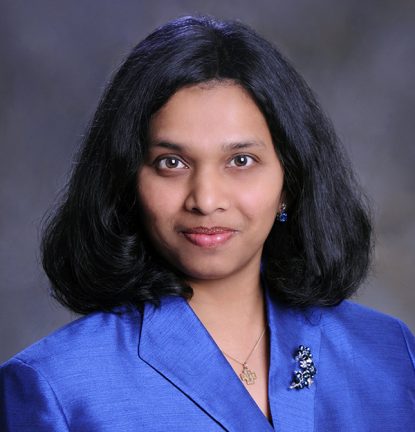
“The Annunciation” was painted by Jan van Eyck circa 1434. (CNS photo/Andrew W. Mellon Collection via National Gallery of Art)
Our Advent preparations culminate in a rich tapestry of biblical readings in this Fourth Week of Advent. The Gospels attune our hearts and minds to receive the greatest gift of God — the incarnation of his son Jesus who enters human history as a poor, humble child.
And even as Advent fades quickly in a flurry of last-minute seasonal activities, we slow our hurried pace to hear God speak into our lives. Pondering the Gospel scene of the Annunciation prepares us to welcome the newborn Jesus through the eyes of the graced woman who prepared most intimately for our Lord’s birth, his mother Mary.
An exquisite altarpiece of the Annunciation by Jan van Eyck, a gifted Netherlandish painter, is a resplendent painted scene of that graced moment when the word of God became flesh in Mary’s womb. This 15th-century oil painting is a beautiful visual companion as we journey from Advent to Christmas.
Van Eyck is among the first artists to visualize the Annunciation in a church interior rather than a domestic or courtyard setting. His remarkable eye for detail and superb use of brilliant color creates a radiant scene, unparalleled in beauty, that draws us into the Annunciation as recounted in the first chapter of Luke’s Gospel.
On the left we see the dazzling face of the archangel Gabriel, framed in delicate curls of golden hair flowing beneath a jeweled crown. Dressed in a regal robe of deep red and glittering gold studded with intricately painted jewels and pearls on its border and clasp, Gabriel is framed by brightly colored wings.
In one hand the divine messenger holds a glass staff while the other hand is raised to convey the divine message to Mary that the Holy Spirit will overshadow her and she will bear Jesus, the son of God, into the world.

Jem Sullivan, educator and author, contributes articles to Catholic News Service and is the author of “The Beauty of Faith.” (CNS photo/courtesy Jem Sullivan)
Look closely to see words coming out of the Archangel Gabriel’s mouth, “Hail, full of grace!” written here in Latin, “Ave Gratia Plena.” The divine words breaking into human history are addressed to the beautiful, serene figure of Mary, clothed in a full-length robe of blue that cascades in multiple folds to the floor.
Mary accepts the sacred message by saying, “I am the handmaid of the Lord.” Look closely, once again, to see Mary’s words, “Ecce Ancilla Domini,” written in Latin, but now in reverse, as if to suggest that God from above hears Mary’s response!
The Holy Spirit, in the form of a dove, hovers directly above Mary carried by rays of golden light streaming through the upper windows of the sacred space. The floor tiles and sacred images highlight Old Testament persons and events that prefigure Christ.
Mary’s head is bowed toward the heavenly messenger to incline the “ear of her heart” to God’s word. Her hands, raised in a gesture of prayer, show how we are to hear and respond to God’s word with our “yes” to God. The lilies in the foreground evoke Mary’s purity in her Immaculate Conception, while the open Bible reminds us that Mary pondered God’s word, keeping close to her heart, mind and body the divine word made flesh.
Mary experiences the natural fear that would accompany such a unique, even startling announcement. But Gabriel’s message is divine in origin and pregnant with the love and light of God being offered to a world enveloped in the isolating darkness of sin. Mary’s natural fear is overcome with supernatural grace. Through her “yes” the Word of God made flesh brings salvation to the human race.
At the Annunciation, Mary teaches us Advent hope. From Mary we learn how to hear the word of God in openness, expectation and trust. As her fear melted into joyful faith, Mary shows us how to replace our fears with confident trust in God’s promised presence.
Color, light and form fixes our gaze on Jesus, whose birth is here announced. We do not see Christ physically present in van Eyck’s magnificent image, but we “see” him with Advent “eyes of faith,” announced by Gabriel and humbly received in the mind, heart and body of Mary.
To contemplate the Annunciation at the close of Advent is to stand in awe before the approaching mystery of the Incarnation, the centerpiece of Christian faith. For as St. Thomas Aquinas notes, when Mary said “yes” she did so “in the name of all human nature.” In Mary’s Annunciation “yes,” may we find our daily “yes” to the trustworthy promises of God.
***
Jem Sullivan, educator and author, contributes a Scripture column to Catholic News Service and is the author of “Believe, Celebrate, Live, Pray: A Weekly Walk with the Catechism.”
PREVIOUS: Already united with Jesus, we open our darkness to his light
NEXT: Advent Week 4: Jesus always with, and within, us



Share this story